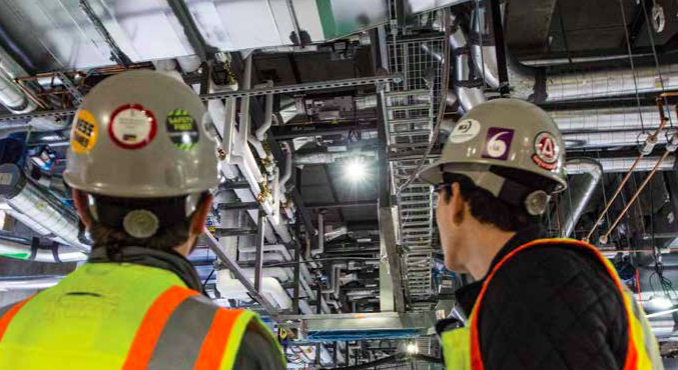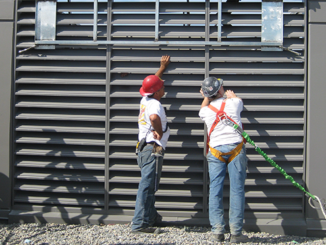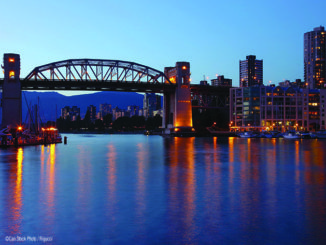
A review of the final MEP model for the new lab space under construction at the University of Washington will show over 270,000 lb of duct and 50,000 linear feet of pipe packed into two interstitial spaces. Looking at the overhead plan view in the model, it looks like a tangled spaghetti mess, but in reality it’s a fine-tuned machine that took tremendous effort by the project team to co-ordinate.
This is where the multi-trade rack (MTR) concept provided a major benefit for facility maintenance and overall project schedule. The success of MacDonald-Miller’s multi-trade racks on past projects paved the way for its experienced project team to play a lead role in designing, modelling, fabricating, and installing the MTRs.
MTRs are essentially structural steel support hangers that allow components that would usually be installed by a number of trades to be pre-fabricated in a controlled environment for higher productivity and quality control. Multiple building systems are designed and fabricated in a single location where they are factory tested, loaded into MTRs, and sent to the site for installation. Configurations are modelled for space efficiency and logistics, and nearly eliminate waste generated during field installation.
MacDonald-Miller installed 58 multi-trade racks at the University of Washington, each approximately 6 feet wide by 14 feet in length. The racks accommodated sheet metal, plumbing, fitting, and electrical trades—the sheet metal trades were attached to the top of the trade rack, the plumbing and fitting trades were on one side of the house, and all electrical trades were on the other side of the rack.
The prime objective was to create for the building maintenance team easy access to the system’s valves, VAVs, and electrical and control panels throughout the building. In addition, fabricating the MTRs in MacDonald Miller’s shop while the structure of the building was being erected created an opportunity to shorten the construction schedule. The MTRs were installed as the precast slabs were being set in place and eliminated hours of work in the field among multiple trades.
The multi-trade rack fabrication and installation timeline was just four months of an overall two-and-a-half-year construction timeline.
In many ways, MTRs act as the spine for the mechanical systems of the building as all the MEP trades branch off of them to different spaces in the building. This creates a challenge when design changes occur because one small change can affect multiple trades on every single rack. It took a significant team effort amongst all MEP contractors during BIM co-ordination and field installation to execute this successfully.
BIM co-ordination began during the design phase so the MTRs could be custom designed with the structure. A unique design feature of the racks was they had to be adjustable to accommodate the slope of the slab they hung from.
Another challenge was competing with an extremely congested interstitial space—the racks had to be designed for maintenance to have proper head clearance and ability to access to all valves, equipment, filters, and electrical panels without a ladder. The design team came up with an inverted u-shaped rack that allowed maintenance to walk inside the rack with easy access to all MEP trades on both sides and overhead.
“Making the multi-trade racks come together for this project has been a team effort from the beginning and seeing our team execute the plan at such a high level is amazing,” said Rylan MacCay, shop and detailing manager for MacDonald-Miller. “The capability we have to detail and install down to 1/8” accuracy enabled us to take thousands of man-hours off a very congested jobsite and install our work at our shop, in conditions that are the safest and most productive for our employees and the other trades we work with.”
Without a doubt, the challenges MacDonald-Miller overcame on this project could not have been met without the experience and dedication from the wide range of professionals in the shop and field. With Skanska, MEP trades, and UW-CPD leading the way, the University of Washington will soon have a state-of-the-art-facility that will further advances in science and medicine and create a more centralized, efficient, and flexible facility to address current and future research needs.



